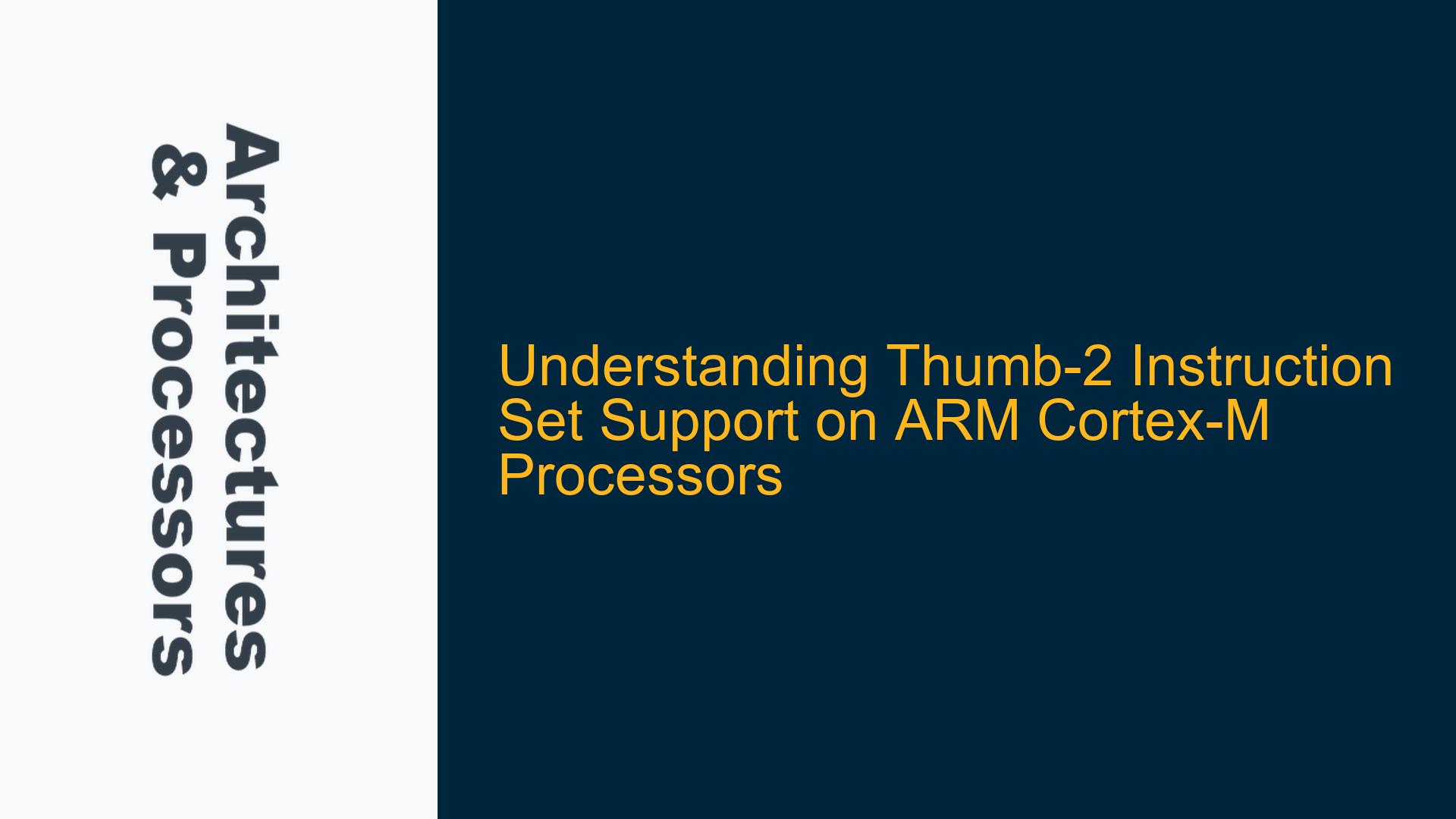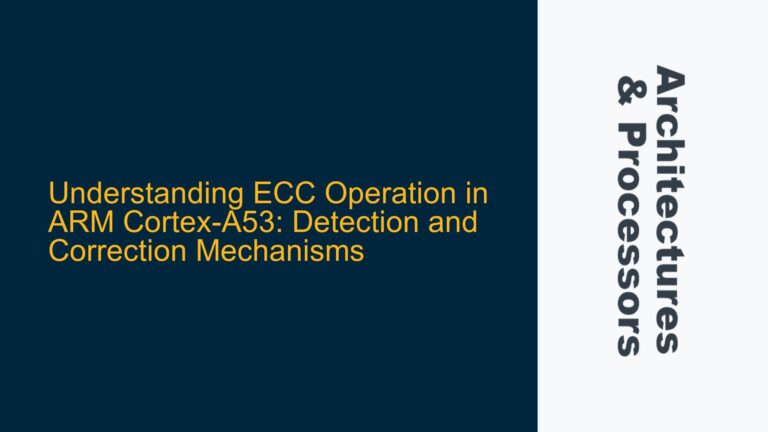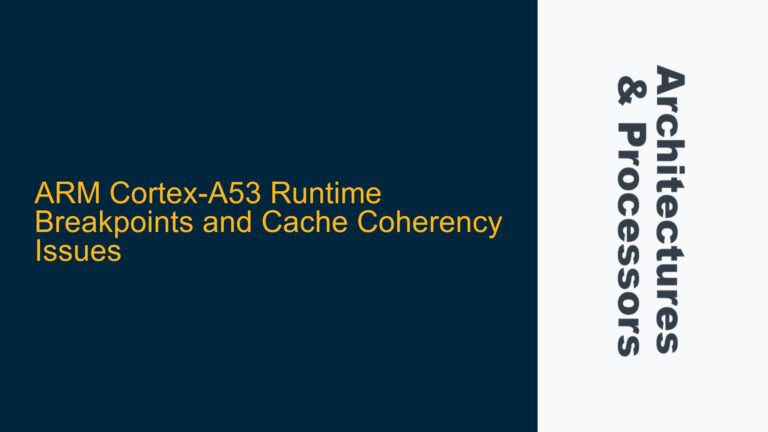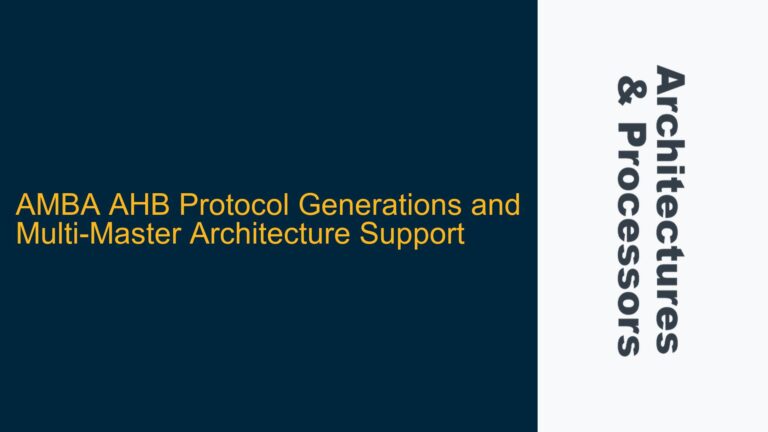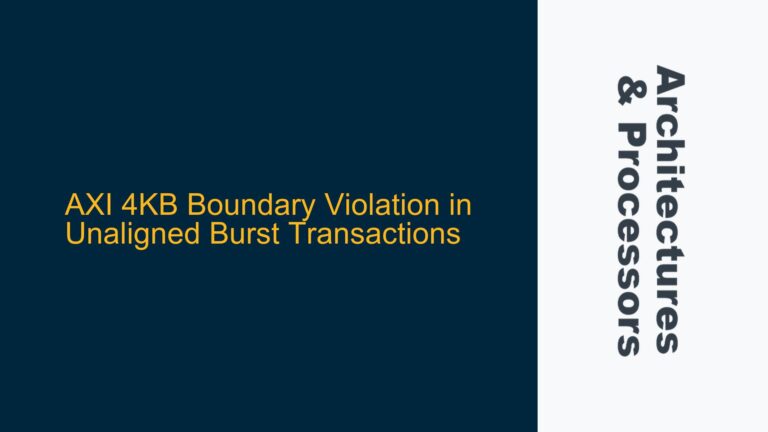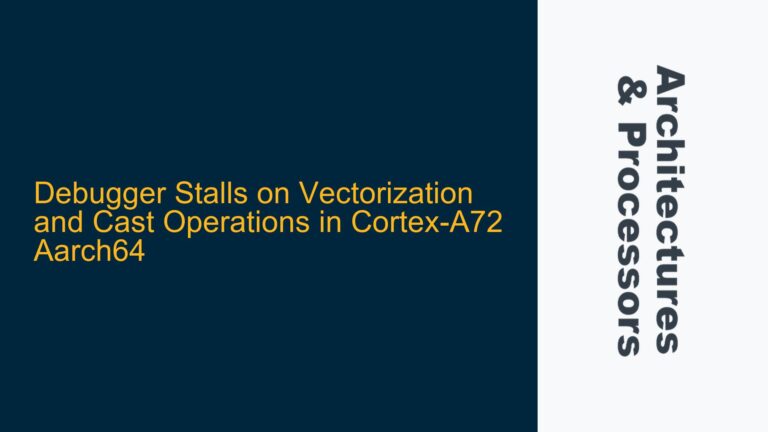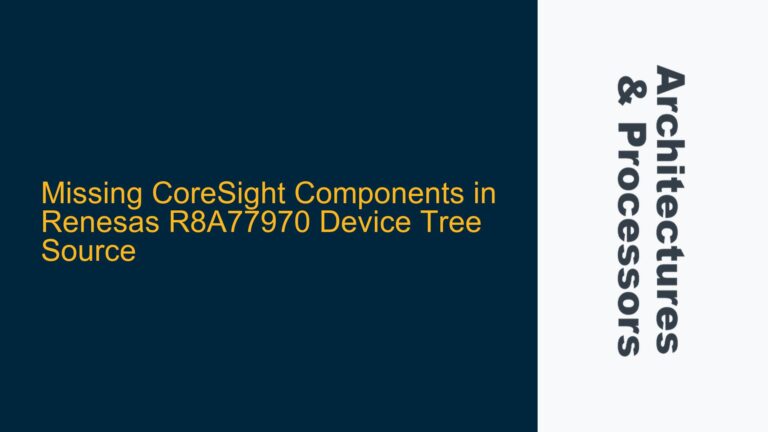Thumb-2 Instruction Set Confusion in ARM Cortex-M0/M0+/M1 Processors
The Thumb-2 instruction set is a blend of 16-bit and 32-bit instructions designed to improve code density and performance in ARM processors. However, there is significant confusion regarding which instructions are supported across different ARM Cortex-M processors, particularly the Cortex-M0, Cortex-M0+, and Cortex-M1. These processors are based on the ARMv6-M architecture, which has a limited subset of the Thumb-2 instruction set compared to the ARMv7-M architecture used in Cortex-M3, Cortex-M4, and later cores. Specifically, instructions like IT (If-Then), CBZ (Compare and Branch on Zero), and CBNZ (Compare and Branch on Non-Zero) are marked as T2 in documentation, indicating they are part of the Thumb-2 extension. This has led to uncertainty about their availability and utility in ARMv6-M processors.
The confusion arises because the Thumb-2 instruction set is often marketed as a unified feature across Cortex-M processors, but the reality is more nuanced. While Cortex-M3 and later cores fully support Thumb-2, Cortex-M0/M0+/M1 processors only support a subset of these instructions. This discrepancy can lead to significant challenges when porting code or optimizing performance for ARMv6-M devices, especially in applications like audio decoding (e.g., MP3 or ACELP) where conditional execution and branch optimization are critical.
ARMv6-M vs. ARMv7-M Instruction Set Differences and Limitations
The root cause of the confusion lies in the architectural differences between ARMv6-M and ARMv7-M. ARMv6-M, used in Cortex-M0/M0+/M1 processors, is a highly optimized architecture for ultra-low-power applications. It supports a minimalistic instruction set to reduce silicon area and power consumption. In contrast, ARMv7-M, used in Cortex-M3 and later cores, introduces a more comprehensive Thumb-2 instruction set, including advanced features like conditional execution (IT blocks) and more efficient branching (CBZ/CBNZ).
The IT (If-Then) instruction, for example, allows up to four subsequent instructions to be conditionally executed based on a condition code. This is particularly useful for reducing branch penalties in tight loops or decision-making code. However, ARMv6-M processors do not support the IT instruction, which means developers must rely on explicit branches, leading to less efficient code. Similarly, CBZ and CBNZ instructions, which eliminate the need for explicit compare instructions before branching, are not available in ARMv6-M. This forces developers to use longer sequences of instructions to achieve the same functionality, increasing code size and reducing performance.
Another critical difference is the lack of hardware divide instructions in ARMv6-M. While ARMv7-M cores include hardware support for integer division (UDIV and SDIV), ARMv6-M processors must rely on software-based division routines, which are significantly slower. These limitations can have a substantial impact on performance-critical applications, such as audio decoding, where fixed-point arithmetic and efficient branching are essential.
Optimizing Code for ARMv6-M Processors Without Thumb-2 Extensions
To address the limitations of ARMv6-M processors, developers must adopt alternative strategies to achieve efficient code execution. One approach is to manually unroll loops and inline small functions to reduce the overhead of branch instructions. While this increases code size, it can improve performance by minimizing pipeline stalls caused by branches. Additionally, developers can use conditional move instructions (e.g., MOV with a condition code) to emulate some of the functionality of the IT block, albeit with less flexibility.
For branching, explicit compare and branch sequences must be used in place of CBZ and CBNZ. For example, instead of using CBZ Rn,
CMP Rn, #0
BEQ <label>
While this requires an additional instruction, careful optimization can mitigate the performance impact. In some cases, rewriting algorithms to reduce the number of branches or using lookup tables can also help improve efficiency.
Another critical consideration is the use of fixed-point arithmetic for applications like audio decoding. Since ARMv6-M lacks hardware divide instructions, developers should avoid division operations wherever possible. Instead, multiplication and bit-shifting can be used to approximate division, especially when dealing with fixed-point numbers. For example, dividing by 16 can be achieved with a right shift of 4 bits, which is much faster than a software-based division routine.
Finally, developers should leverage the available tools and resources to optimize their code. ARM provides detailed documentation and application notes for Cortex-M processors, including guidelines for writing efficient code for ARMv6-M. Additionally, using a compiler with strong optimization capabilities can help automate many of these techniques, although manual tuning is often necessary for performance-critical sections.
In conclusion, while ARMv6-M processors like Cortex-M0/M0+/M1 have limitations compared to their ARMv7-M counterparts, careful optimization and alternative coding strategies can help achieve efficient and performant code. By understanding the architectural differences and adopting best practices, developers can overcome these challenges and deliver high-quality solutions for ultra-low-power applications.
